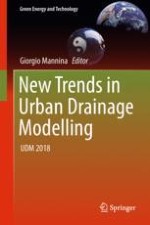2019 | OriginalPaper | Chapter
Promoting Successful Urban Watershed Restoration Through Enhanced Bioretention Cell Modelling
Authors : Whitney Lisenbee, Jon Hathaway, Ryan Winston
Published in: New Trends in Urban Drainage Modelling
Publisher: Springer International Publishing
Activate our intelligent search to find suitable subject content or patents.
Select sections of text to find matching patents with Artificial Intelligence. powered by
Select sections of text to find additional relevant content using AI-assisted search. powered by
